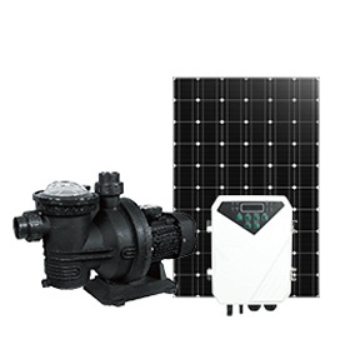What is a Solar Well Pump?
A solar well pump operates on the abundant energy provided by the sun, diverging from traditional well pumps that rely on grid electricity. Functionally, both types of pumps serve the same purpose, extracting water from wells. Let’s delve deeper into the intricacies of solar well pumps, their types, and the considerations when utilizing solar energy for well pumping systems.
Types of Well Pumps:
Well pumps come in three primary types:
- Surface Pumps
- Floating Pumps
- Submersible Pumps
All three can be powered by solar energy, offering versatility in various applications.
Utilizing Solar Energy for Well Pumps:
Solar well pumps can be categorized based on their location and electrical requirements, namely:
- AC Well Pump (Converted Solar Power): Ideal for integrating solar power with existing AC pumps. These pumps typically run on grid electricity and require an inverter to convert solar-generated DC power into AC.
- DC Well Pump (Directly Using Solar Power): Suited for new installations where the pump and solar panel system are deployed simultaneously. These pumps operate efficiently on DC electricity produced directly by solar panels, eliminating the need for an inverter.
-
Hybrid Solar Pump: Capable of running on both AC and DC electricity, providing flexibility and backup options. However, hybrid pumps may suffer from reduced efficiency compared to dedicated AC or DC pumps.
Benefits of Solar Well Pumps:
The advantages of utilizing solar energy for well pumps include:
- Accessibility in remote areas lacking grid connectivity.
- Reliability during blackouts, serving as a backup power source.
- Significant cost savings due to the abundance of free solar energy, resulting in minimal running costs.
- Sustainable off-grid living, ensuring water supply without reliance on conventional energy sources.
Components of a Solar-Powered Well Pump System:
Key components of a solar well pump system include:
- Water Pump: Housing a motor, the pump extracts water from the well and delivers it to the surface, typically through pipes connected to a storage tank.
- Water Pipes: Essential for transporting water from the pump to the storage tank.
- Solar Panels: Sized according to pump requirements, solar panels harness sunlight to power the pump. Optimal positioning maximizes sunlight exposure while minimizing wiring distances.
- Maximum Power Point Tracker (MPPT): Regulates solar energy output to optimize voltage, current, and power, ensuring efficient operation of the pump.
While not a component of the pump system itself, a storage tank is essential for storing pumped water, ensuring a continuous water supply even during periods of low sunlight or high demand.
In conclusion, solar well pumps offer a sustainable, cost-effective solution for accessing water, particularly in remote or off-grid locations. Understanding the types, benefits, and components of solar well pump systems empowers users to make informed decisions, ensuring reliable water supply while minimizing environmental impact and operating costs.










